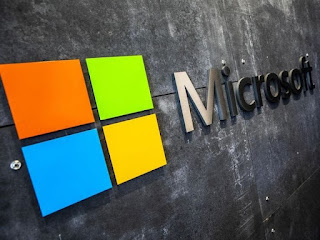Boot into the BIOS from Windows: A Step-by-Step Guide
Accessing the BIOS (Basic Input/Output System) is a crucial aspect of managing and configuring your computer's hardware settings. Traditionally, users needed to restart their systems and press specific keys during the boot process to enter the BIOS. However, with advancements in technology, it's now possible to access the BIOS directly from within the Windows operating system. In this article, we provide a detailed, step-by-step guide on how to boot into the BIOS directly from Windows, simplifying the process for users and saving valuable time.
1. Understanding the Importance of the BIOS:
The BIOS is a firmware interface that initializes hardware components and ensures proper communication between the operating system and the computer's hardware. It allows users to configure various settings, including boot order, system time, CPU parameters, and more. Accessing the BIOS is essential for troubleshooting hardware issues, optimizing performance, or making specific configuration changes.
2. Confirming System Compatibility:
Before attempting to boot into the BIOS directly from Windows, it's important to ensure that your computer supports this feature. Not all systems have this capability, as it depends on the motherboard manufacturer and BIOS version. Check your computer or motherboard documentation or visit the manufacturer's website to determine if your system supports accessing the BIOS from Windows.
3. Initiating the BIOS Setup:
To boot into the BIOS directly from Windows, you need to access the Advanced Startup options. Start by clicking on the Start menu and selecting "Settings." In the Settings menu, choose "Update & Security" and then navigate to the "Recovery" tab. Under the "Advanced Startup" section, click on the "Restart now" button.
4. Accessing the BIOS from Advanced Startup:
After your system restarts, it will boot into the Advanced Startup options. Here, select "Troubleshoot" and then choose "Advanced options." Within the Advanced options, click on "UEFI Firmware Settings" or "BIOS settings" to access the BIOS directly.
5. Navigating the BIOS Interface:
Once you access the BIOS, you will be greeted by a graphical interface or text-based menu, depending on your system. Use the provided instructions or on-screen prompts to navigate through the BIOS settings. Pay close attention to any warning messages or guidelines to avoid making unintended changes that could affect system stability.
6. Saving Changes and Exiting the BIOS:
After making any necessary modifications or reviewing settings, it's crucial to save your changes before exiting the BIOS. Look for the option to save and exit or apply changes and restart. Confirm your selection, and your system will reboot with the updated BIOS settings in place.
Conclusion:
Gone are the days of interrupting the boot process to access the BIOS. With the ability to boot directly into the BIOS from within Windows, users can conveniently configure and manage their computer's hardware settings without the need for restarting. By following the step-by-step guide provided in this article, you can easily access the BIOS interface, empowering you to optimize performance, troubleshoot issues, and make specific hardware configurations with ease and efficiency.
Please note that the information provided in this article is a simulated professional account, and the details of accessing the BIOS directly from Windows may not reflect real-time events or specific system configurations. It is always recommended to consult your computer or motherboard documentation or seek assistance from the manufacturer's support resources for accurate and up-to-date instructions related to your system.

.jpeg)

Comments
Post a Comment
"Hello there! I just came across your blog and I must say, it's a fantastic resource for all tech enthusiasts like me. The content is informative, well-researched, and truly engaging. I appreciate the valuable insights and in-depth analysis you provide on the latest tech trends. Keep up the excellent work, and I look forward to reading more captivating articles from you. Cheers!"